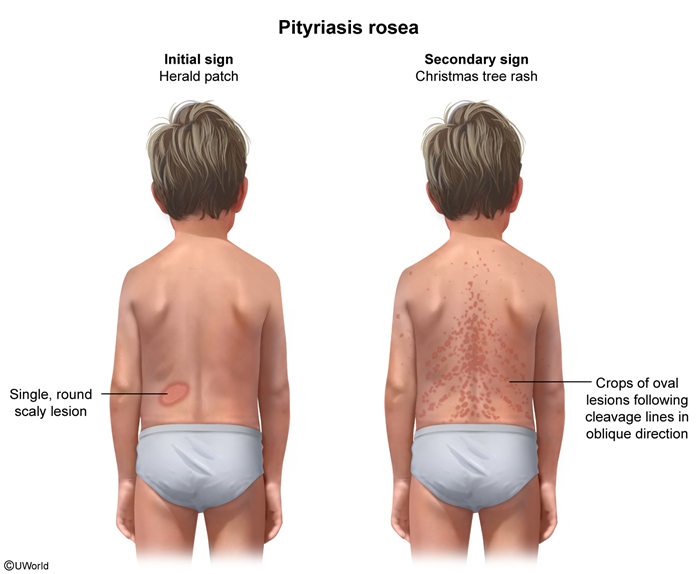Pityriasis Rosea
Article Sections
Introduction
Pityriasis rosea is a benign, self-limited condition characterized by a distinctive rash with erythematous, oval lesions on the trunk and proximal extremities.
Pathophysiology and risk factors
The pathophysiology of pityriasis rosea remains unknown; however, a viral etiology has been hypothesized because the rash is preceded by a viral prodrome of headache, malaise, and pharyngitis in some patients.
Risk factors that may predispose individuals to develop pityriasis rosea include:
-
Age: primarily affects adolescents and young adults; peak incidence is between age 10 and 35
-
Recent viral illness
-
Seasonality: more common during the spring and fall
Clinical presentation
The clinical presentation of pityriasis rosea begins with a solitary, annular, erythematous, scaly lesion, known as a herald patch, on the neck or trunk. As the herald patch increases in size and fades centrally, multiple clusters of small, erythematous, oval lesions appear on the trunk and proximal extremities. These lesions follow tension lines in a
Continue Learning with UWorld
Get the full Pityriasis Rosea article plus rich visuals, real-world cases, and in-depth insights from medical experts, all available through the UWorld Medical Library.
Figures
